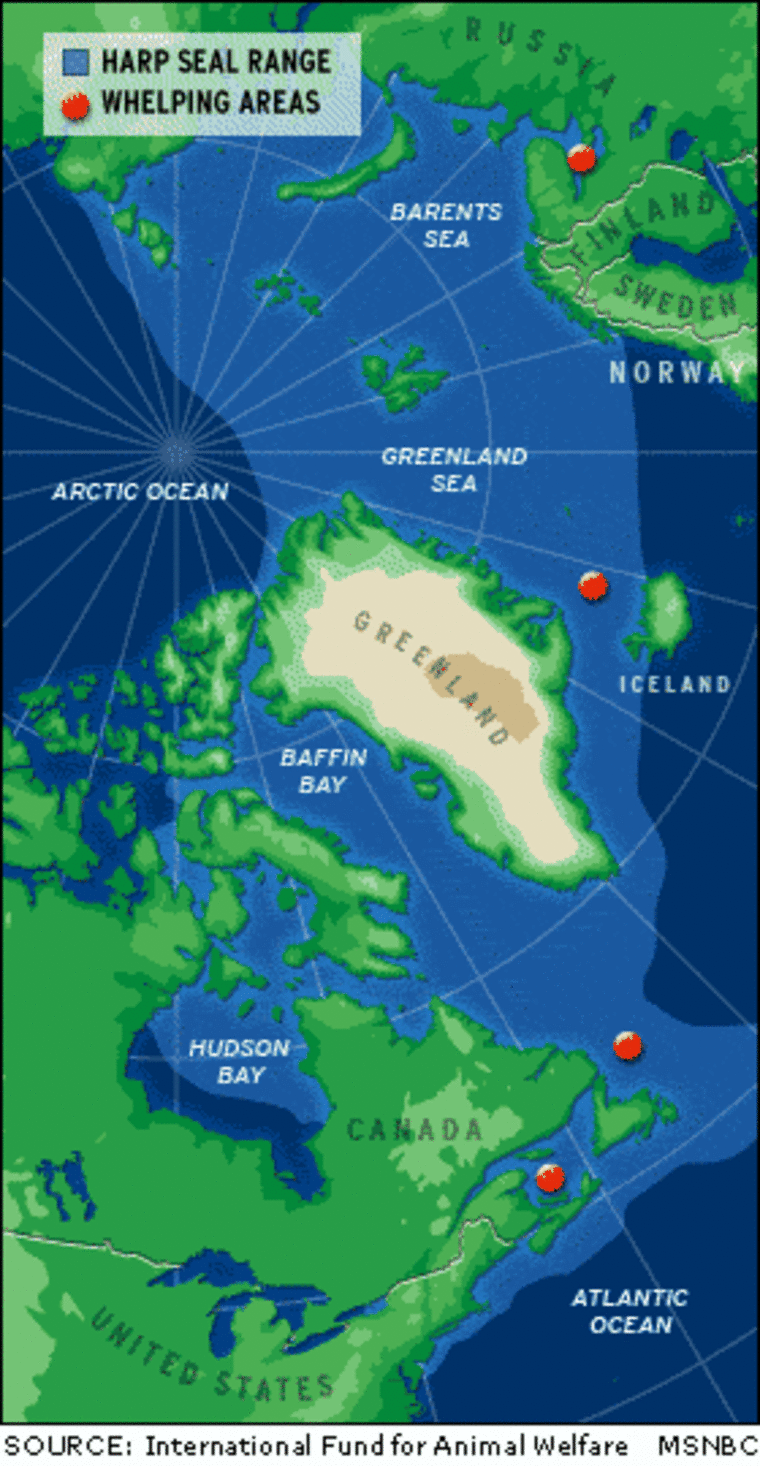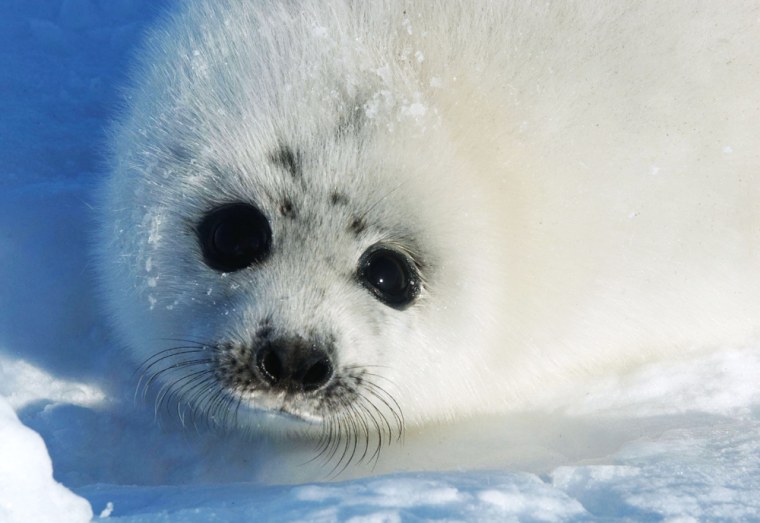Seal hunting will be allowed for up to another month off Canada’s east coast because the annual quota of 350,000 has not been reached, a Canadian official said Thursday.
Christie Parcigneau, a media officer with Canada’s Department of Fisheries and Oceans, said about 280,000 harp seals have been killed so far.
“The hunt can go on until May 15, depending on the weather and if the quota has been reached,” Parcigneau said.
Activists call the hunt inhumane, with some seal pups being skinned alive.
The hunt — carried out with rifles and spears and reviled by animal rights activists — is being held in the Gulf of St. Lawrence off the coast of Quebec and in the frozen barrens of the Atlantic Ocean off Newfoundland.
Hunters are allowed to kill 350,000 young seals this year, the largest amount since the government instituted quotas in the 1960s.
Wildlife officials said that the harp seal population is growing at 5.2 million and pelts are garnering record prices of about $50 each.
Activists monitoring hunt
Chris Cutter of the International Fund for Animal Welfare said about 10 protesters from his group, an organization founded to fight the seal hunt, turned up for the Gulf hunt on Tuesday.
Steve Outhouse, a spokesman for Canada’s Department of Fisheries and Oceans, said no animal rights activists attended the more isolated hunt off Newfoundland.
Earlier this year, the Humane Society of the United States took out full-page newspaper ads urging Americans to cancel trips to Canada and boycott Canadian products.

In 1972, the United States passed the Marine Mammal Protection Act which bars the hunting of marine mammals, including seals, sea lions and polar bears.
Many countries, including the United States, still ban imports of seal products, but Canada supports the hunt to help its economically suffering coastal towns. The industry earned about $15 million last year, primarily from pelt sales to Norway, Denmark and China.
Outhouse said that “our position is based on science. Right now the harp seal population off Canada’s east coast is booming — 5.2 million as opposed to less than a third of that in the 1970s.”
“Most Canadians are okay with the hunt in principle," he added, "as long as it’s being done in a way that is sustainable and as humanely as possible.”
Smaller hunt last month
The first leg of this year’s hunt took place in the last week of March on the ice floes in the Gulf of St. Lawrence near Quebec’s Magdalen Islands. Sealers there took an estimated 90,000 animals.
In both hunts, the seals are taken in the "whelping" areas where they born a few weeks earlier.
For many of the sealers, most of whom also fish for cod or crab, the seal hunt is the first seasonal income they will make this year, said Earl McCurdy, head of the union.
After rising international outrage over the hunt in the 1970s and 1980s forced the collapse of historic European markets for seal pelts, Canada passed legislation in 1987 that restricted the methods used to hunt seals.

Canada banned the killing of whitecoat seal pups younger than 12 days and limited sealers to the use of small boats rather than large commercial vessels.
As markets for seal skins and products slowly revived in eastern Europe and Asia, the hunt’s economic benefits were seen as an important way to replace income lost when the centuries old cod fishery collapsed in the early 1990s.
But animal rights groups say the cull of defenseless seal pups two weeks to three months old amounts to nothing less than a slaughter of the innocents. The seals are clubbed or shot to death on the ice floes where the mammals give birth and prepare to mate before heading to the Arctic.
“It’s a slaughter of one of the world’s greatest wildlife spectacles,” said IFAW’s Rebecca Aldworth. “The seal nursery is absolutely pristine and beautiful just days before the hunters come. And then, just days later, that peace on the ice is shattered by the hunters who club and shoot everything in sight.”
Canadian media tend to support hunt
Despite criticism from animal rights groups and intense scrutiny from international media, the seal hunt still has broad support in the Canadian press.
On Saturday, Montreal’s Gazette mockingly noted that “limousine liberals from Manhattan to Knightsbridge are fretting and signing petitions about the fate of the cute little seals off Canada’s east coast.”
The newspaper then offered a recipe for seal-flipper pie, a traditional Newfoundland dish.
IFAW background on the seal hunts is online at www.ifaw.org.
Canadian government background is online at www.dfo-mpo.gc.ca/seal-phoque/index_e.htm.
